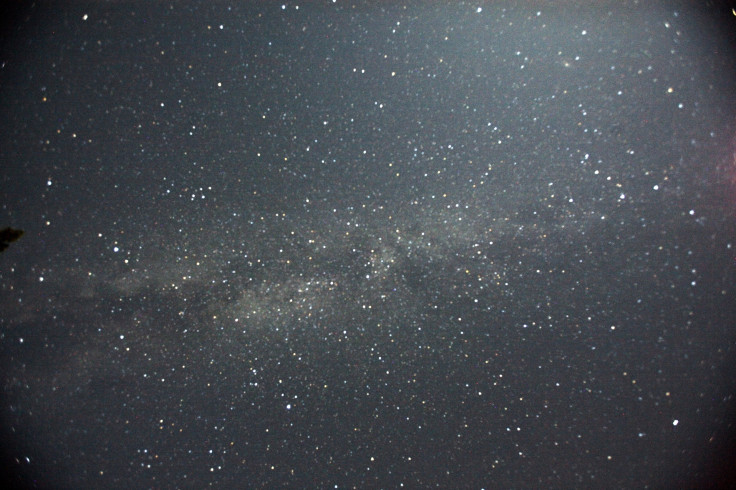What Is KIC 8462852? Are Orbiting Alien Megastructures Causing Tabby's Star To Flicker?

Are there civilizations in the universe's faraway corners that have built megastructures around their stars to harness energy? Interest in the so-called alien megastructures is rising again, thanks to some highly unusual behavior by Boyajian's star, about 1,300 light-years away.
Named after U.S. astronomer Tabetha S. Boyajian, the star KIC 8462852 in the Cygnus constellation just dimmed about 22 percent, or more than a fifth, since Friday morning, the Atlantic reported. That is a massive change in brightness for a star. The phenomenon is not seen in any of the other 150,000 stars that Kepler Space Telescope has observed. And it's not the first time Tabby’s star — so called in honor of Boyajian — has lost its brightness and then regained it, the flux lasting between five and 80 days. The dimming has baffled scientists even more because it has not happened at regular intervals.
CALL TO ACTION!! https://t.co/ll69iRowqi
— Dr Tabetha Boyajian (@tsboyajian) May 19, 2017
Kepler has been tracking the brightness of stars since 2009, looking for minor dips in their light, which could be a tell-tale sign of an orbiting exoplanet. Data from Kepler was made available to the public in order to allow “citizen scientists” to join the hunt for such planets. A group of volunteers noticed the strange flickering in 2011.
Scientists have come up with a raft of explanations for the strange behavior exhibited by KIC 8462852 — from passing comets shielding the view from Earth of the star, to fragments of a planet that has broken up obstructing the view. And since Tabby’s star is not a young star, going by cosmic timescales, they ruled out clouds or disks of dust hanging around it, or even nearby asteroids.
But the explanation that has fascinated everyone is this: an orbiting alien megastructure is causing the strange flickering observed in KIC 8462852, by periodically blocking out visible light from the star.
Why would an alien civilization need such a megastructure? The concept of such structures was popularized by Freeman Dyson, a physicist, in 1960, who argued that advanced civilizations with the ability to build such megastructures around stars would need them to fill their energy needs and, consequently, long-term survival. In other words, depending on resources from a home planet alone to address the escalating energy needs of a technological civilization isn't a very viable approach, and it would be logical for advanced civilizations to start directly tapping into the energy emitted by their stars. Dyson reasoned that humankind will arrive at a point where it will demand the total energy output of the sun.
Considering how our own civilization is struggling to address our energy needs without aggravating climate change, Dyson’s argument has merit. Such megastructures are known as Dyson Spheres, and have been postulated to have, apart from energy harnessing elements, habitation and industrial elements. Nikolai Kardashev, a Russian astrophysicist, offered that depending on how advanced a civilization was, they would build such megastructures around their planet, solar system, and galaxy.
Outside of science fiction and the high-voltage intellectual jostling among scientists, such megastructures have also been talked about in Atlantean lore. Enthusiasts of Atlantean culture — by unproven accounts, a highly evolved civilization inhabited the earth before our current one took its fledgling steps — have speculated that the civilization used orbiting space structures to harness and transmit energy. And one of the theories is that the cataclysmic earth changes that wiped out Atlantis occurred due to the failure of an orbital megastructure.
Humankind is still very far from the point when it would need the total energy output of the sun and Dyson Spheres are still beyond our engineering capability. But we can look at ourselves as having taken some baby steps in that direction already without even consciously thinking on those lines. The International Space Station and solar sails can be thought of as elements, however rudimentary, of a Dyson Swarm — a dense collection of such structures orbiting a star.
Coming back to Tabby's star, scientists want to rule out all natural reasons that could cause it to flicker before looking for a miracle cause. From photographs made early as 1890, astronomers have found that Tabby’s star is flickering on short timescales even as it has been dimming over the course of more than a century. The same phenomenon could be causing both. A possible and a more prosaic explanation was offered earlier this year by researchers from Columbia University and the University of California, Berkley.
The researchers said the star might have eaten up a planet, causing a big outburst of brightness from which it is now recovering; and the planetary debris could be still orbiting the star, causing the periodic dimming and brightening. Compared to the wilder theories out there, this drab explanation may be closer to the truth.
© Copyright IBTimes 2024. All rights reserved.




















